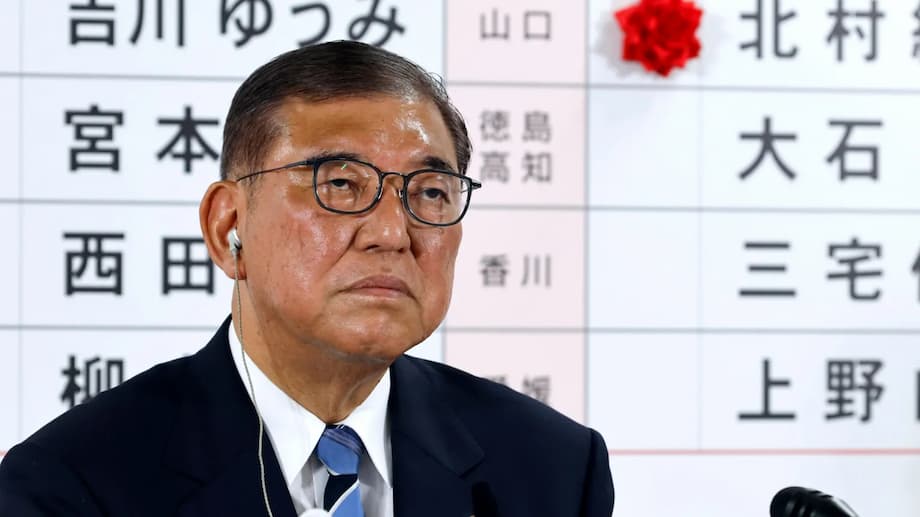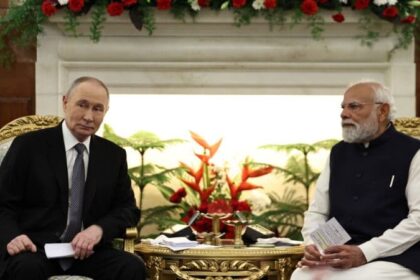Japan’s Ruling Coalition Loses Upper House Majority: A Watershed Election
Japan’s political landscape has been dramatically reshaped after Prime Minister Shigeru Ishiba’s ruling coalition suffered a historic defeat in the 2025 House of Councillors (Upper House) election. For the first time since its founding in 1955, the Liberal Democratic Party (LDP) and its junior partner Komeito have lost control of both chambers of the National Diet, Japan’s parliament. The outcome signals deep public frustration over economic woes, rising living costs, and a surge in right-wing populism, raising urgent questions about the future of Ishiba’s government and the direction of Japanese politics.
- Japan’s Ruling Coalition Loses Upper House Majority: A Watershed Election
- The Rise of Populism and the Far-Right: Sanseito’s Surge
- Opposition Gains and the Fragmented Political Landscape
- Prime Minister Ishiba’s Response: Vows to Stay, Faces Calls to Resign
- Economic and Social Challenges: Inflation, Trade, and Demographics
- What Happens Next? Scenarios for Japanese Politics
- In Summary
Voters went to the polls on July 20, 2025, to elect 125 of the 248 seats in the Upper House. The LDP-Komeito coalition needed at least 50 new seats to maintain their majority, but exit polls and early results showed them falling short, with projections ranging from 32 to 51 seats. This loss follows the coalition’s defeat in the more powerful Lower House last October, leaving Ishiba’s administration as a minority government and further weakening its grip on power.
What Triggered the Voters’ Backlash?
The election was widely seen as a referendum on Ishiba’s leadership and the LDP’s ability to address Japan’s mounting challenges. Economic issues dominated the campaign, with voters expressing anger over soaring prices—especially for rice, a staple food—stagnant wages, and burdensome social security payments. The government’s perceived failure to tackle inflation and provide relief for struggling households fueled discontent.
Adding to the pressure, a looming trade crisis with the United States threatened to impose 25% tariffs on Japanese exports unless a deal could be reached by August 1. U.S. President Donald Trump’s demands for increased imports of American rice and autos, as well as higher Japanese defense spending, became a flashpoint in the campaign. Many voters felt the government was not doing enough to protect their economic interests in the face of international pressure.
The Rise of Populism and the Far-Right: Sanseito’s Surge
Perhaps the most striking development in this election was the rapid ascent of the Sanseito party, a right-wing populist group that capitalized on anti-immigration sentiment and economic anxiety. Founded during the COVID-19 pandemic and initially known for spreading conspiracy theories online, Sanseito ran on a “Japanese First” platform, calling for stricter immigration controls, traditional gender roles, and skepticism toward globalism and vaccines.
The party’s message resonated with voters frustrated by what they saw as government inaction and a perceived loss of national identity. Sanseito’s success reflects a broader trend of rightward shifts in Japanese politics, with the party expected to win 10-15 seats—up from just one previously. This surge has brought once-fringe rhetoric into the mainstream and alarmed human rights activists and foreign residents, who fear a rise in xenophobia and social division.
Why Is Immigration Such a Flashpoint?
Japan has long been known for its strict immigration policies and cultural homogeneity. However, recent years have seen a record influx of foreign residents and tourists, with the foreign-born population reaching 3.8 million—about 3% of the total. While this is still low compared to Western countries, the visibility of foreigners has increased, especially in urban centers and tourist hotspots.
Some Japanese citizens blame this influx for rising prices and social tensions, despite evidence that foreign workers are helping to fill labor shortages in an aging society. The Sanseito party and other right-leaning groups have tapped into these anxieties, promising to “take back” Japan for its citizens and resist what they describe as a “silent invasion.” Their rhetoric has sparked protests and concern among those who value Japan’s postwar tradition of stability and social harmony.
Opposition Gains and the Fragmented Political Landscape
While the LDP-Komeito coalition suffered heavy losses, opposition parties made significant gains. The main opposition Constitutional Democratic Party (CDP) expanded its seat count, while the centrist Democratic Party for the People (DPP) and Sanseito also increased their representation. However, the opposition remains fragmented, with eight main parties unable to form a united front or present a clear alternative to the ruling coalition.
This fragmentation has complicated efforts to challenge the LDP’s dominance. Despite their gains, opposition parties are divided on key issues such as tax policy, social security, and foreign relations. Some advocate for tax cuts and increased welfare spending, while others focus on stricter immigration controls or progressive social reforms. The lack of a cohesive platform has limited their ability to capitalize fully on the public’s desire for change.
What Does the Upper House Actually Do?
The House of Councillors is the less powerful of Japan’s two parliamentary chambers. It cannot initiate no-confidence motions against the government, and its decisions on budgets and treaties can be overridden by the Lower House. However, losing control of the Upper House makes it much harder for the government to pass legislation, forcing it to negotiate with opposition parties or seek new coalition partners. This can lead to legislative gridlock and political instability.
Prime Minister Ishiba’s Response: Vows to Stay, Faces Calls to Resign
In the wake of the defeat, Prime Minister Ishiba acknowledged the “harsh result” and accepted responsibility for the coalition’s poor showing. Speaking to reporters, he emphasized the importance of ongoing trade negotiations with the United States and insisted he had no plans to resign:
“We are engaged in extremely critical tariff negotiations with the United States…we must never ruin these negotiations. It is only natural to devote our complete dedication and energy to realizing our national interests.”
Despite his determination to stay on, Ishiba faces mounting pressure from within his own party. Powerful LDP figures, including former Deputy Prime Minister Taro Aso, have publicly questioned his leadership, arguing that he should step down to take responsibility for the defeat. The last three LDP premiers who lost a majority in the Upper House resigned within two months, and many analysts expect similar calls for change in the coming weeks.
Potential successors such as Sanae Takaichi, Takayuki Kobayashi, and Shinjiro Koizumi are already being discussed as possible contenders for the party leadership. A leadership contest could unleash political drama and further destabilize the government at a time when Japan faces urgent economic and diplomatic challenges.
Economic and Social Challenges: Inflation, Trade, and Demographics
The election results reflect deep-seated anxieties about Japan’s economic future. Inflation has eroded household purchasing power, with the price of rice doubling in the past year. Wages have stagnated, and social security costs continue to rise as Japan’s population ages. The government’s emphasis on fiscal restraint—aimed at managing the world’s largest national debt—has clashed with public demands for tax cuts and increased welfare spending.
Trade tensions with the United States have added to the uncertainty. President Trump’s threat to impose 25% tariffs on Japanese goods unless a new deal is reached by August 1 has put Ishiba’s government under intense pressure. Failure to secure an agreement could deal a severe blow to Japan’s export-dependent economy, particularly in key industries like automotive manufacturing.
Meanwhile, demographic challenges loom large. Japan’s population is shrinking and aging faster than any other major economy, creating labor shortages and straining the social safety net. While some policymakers see increased immigration as a solution, public resistance remains strong, as evidenced by the success of anti-immigration parties in this election.
Public Opinion: Stability vs. Change
The election exposed a nation divided between those who value stability and those who crave change. Some voters, like 43-year-old consultant Yuko Tsuji, supported the LDP for its track record of unity and order:
“If the ruling party doesn’t govern properly, the conservative base will drift toward extremes, so I voted with the hope that the ruling party would tighten things up.”
Others, like self-employed Daiichi Nasu, 57, sought a more inclusive and diverse society, supporting opposition parties that advocate for open immigration and progressive social policies:
“I hope for a change toward a more inclusive and diverse society, with more open immigration and gender policies such as allowing married couples to keep separate surnames.”
This split reflects broader debates about Japan’s identity, its role in the world, and how best to address the challenges of the 21st century.
What Happens Next? Scenarios for Japanese Politics
With the ruling coalition now a minority in both houses, Japan faces a period of political uncertainty. Several scenarios are possible:
- Ishiba Resigns: If internal pressure mounts, Ishiba could step down, triggering a leadership contest within the LDP. This would likely lead to a new prime minister and possibly a cabinet reshuffle.
- Coalition Expansion: The government could seek to broaden its coalition by partnering with centrist opposition parties such as the Democratic Party for the People or the Constitutional Democratic Party. This would require policy concessions and complex negotiations.
- Legislative Gridlock: Without a majority, the government may struggle to pass key legislation, leading to policy paralysis and possible snap elections.
- Policy Shifts: To regain public trust, the LDP may adopt some opposition proposals, such as targeted tax cuts or tougher immigration controls, though this risks further alienating moderate voters.
Regardless of the outcome, the election has exposed the limits of Japan’s postwar political consensus and opened the door to new forces—both progressive and reactionary—that could reshape the country’s future.
In Summary
- Prime Minister Shigeru Ishiba’s ruling coalition lost its majority in the Upper House, marking a historic setback for the LDP-Komeito alliance.
- Economic frustration, rising prices, and a looming U.S. trade crisis fueled voter anger and drove support for opposition and populist parties.
- The far-right Sanseito party made significant gains with its anti-immigration, nationalist platform, reflecting a rightward shift in Japanese politics.
- Opposition parties remain fragmented, complicating efforts to form a stable alternative government.
- Ishiba has vowed to stay on as prime minister, but faces mounting calls for resignation from within his own party.
- Japan now faces a period of political uncertainty, with possible scenarios including leadership change, coalition expansion, or legislative gridlock.
- The election has exposed deep divisions over Japan’s economic future, immigration policy, and national identity, setting the stage for further political drama in the months ahead.












